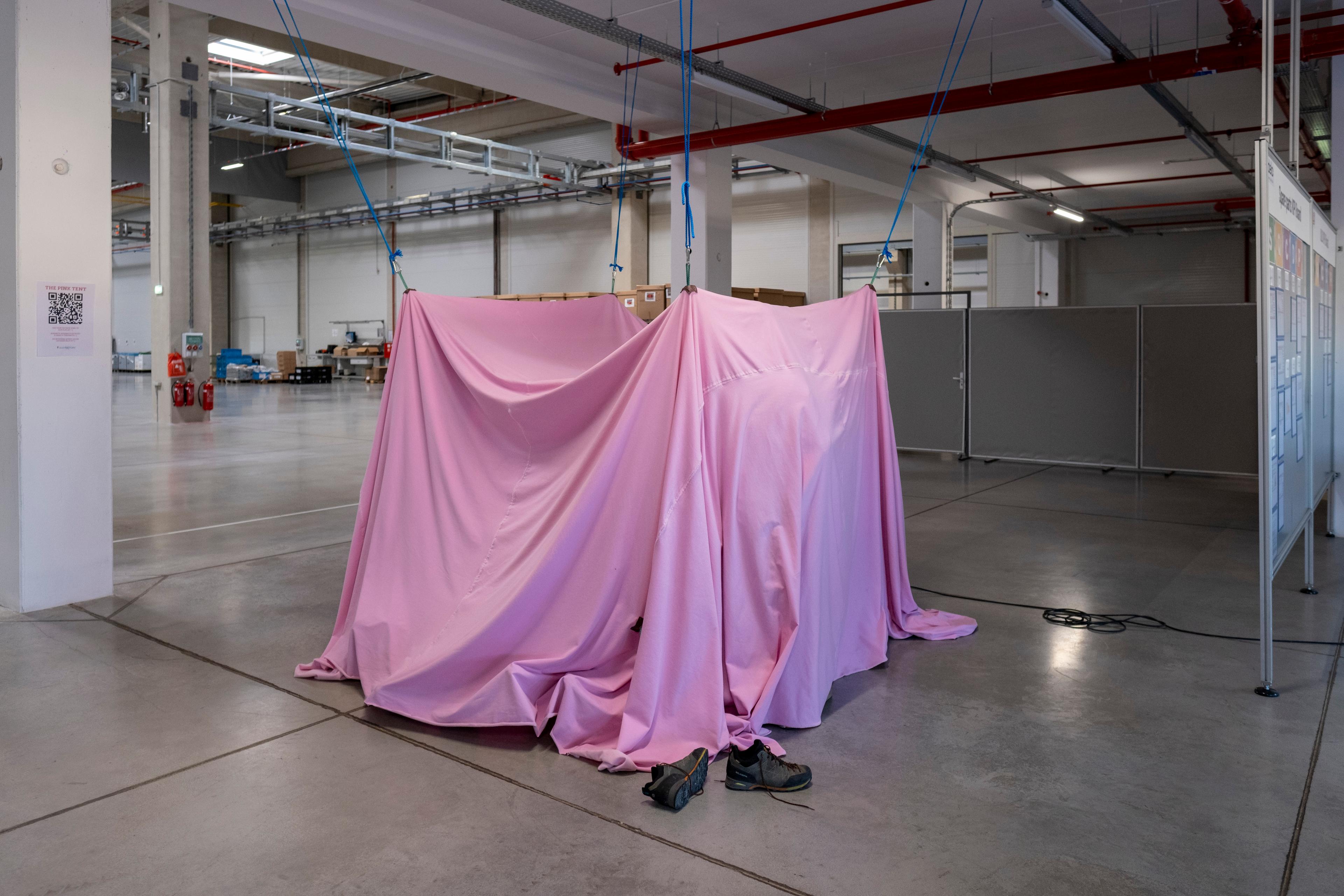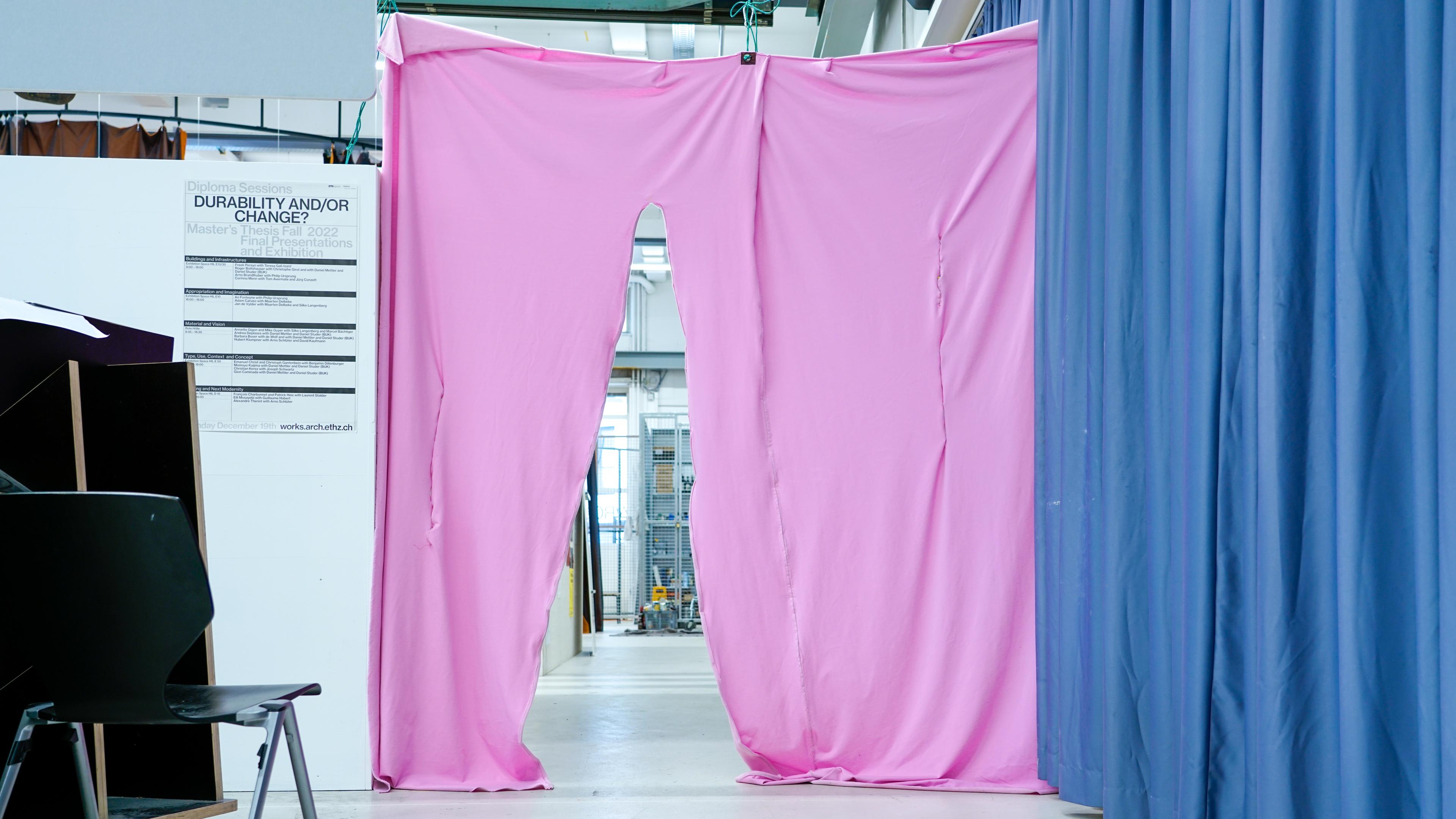Studio Plovdiv – Smooth Operators
Introduction
Studio Plovdiv took place during the fall semester of 2022. It was engaging with one of the most contested spatial and socio-economic conditions of our time: the complicated co-existence of global spaces of production in peripheral places where local communities live. We looked at the development of a special economic zone on the outskirts of Plovdiv, the second largest city of Bulgaria. Referred to by some as an example of an ‘human exclusion zone’, numerous factory workers defy this dystopian description by spending a large part of their lives inside ‘the zone’. We engaged with this extreme environment, which is seemingly inhabited by a very special species of Smooth Operators who work at the speed of global demand and supply chains. Along the way we will get to know these anonymous spaces and the people working in time. What if we would start seeing them not as generic elements in a worldwide network, but instead as a rich habitat that offers jobs and other opportunities to a locally rooted community?
The studio drew on the research of Ina Valkanova, an architect and doctoral fellow at the Institute for Landscape and Urban Studies (LUS) of ETH Zurich. who is originally from Bulgaria and has been studying and actively engaging with the factories and workers that together form Trakiya economic zone (TEZ). TEZ and other special economic zones are smooth service landscapes, mainly driven by capital accumulation and speculation processes, designed to provide global markets with products. Ina’s study looks into the way this particular economic zone in Plovdiv developed from a cherry processing plant into the biggest investment project of the country hosting a wide variety of global manufacturing companies. Through her research she has identified opportunities for small and meaningful actions that can help change TEZ from a site of extraction that fuels a global supply chain into a place that adds value to the local context.
Starting from Ina’s research, and building on the intimate relationships she established through her engagement, we developed prototypes of spatial and strategic ideas and interventions that respond to the urgencies of the TEZ community, from the plant manager to the factory worker. In Plovdiv we focused on two specific factories: one making rear lights and the other producing steering shafts for a.o. Mercedes-Benz and BMW. In Zürich, we used our own studio space and the Design in Dialogue Lab in the so-called ONA-building - itself a former factory building - as our production site. From there we also visited the Willi Elbe factory in St. Gallen, which is operated by the same company as one of the factories in Plovdiv.
Context
Trakiya economic zone (TEZ) is considered the biggest and most successful public-private partnership in Bulgaria, as well as one of the most important urban, social and ecological elements of the region of Plovdiv. The undisputed importance of the zone for the city Plovdiv is somehow unexpected, considering the city claims the title “oldest city in Europe”. While the city centre is a showcase of ancient buildings, such as the still functioning Roman theatre from 1st century AD and a Greek agora from 2nd century AD, its hinterlands are reigned by contemporary global industrialisation, in the form of a special economic zone.
TEZ consists of six industrial parks, located around the city of Plovdiv, almost forming a ring with a radius of about 20 km. It is a tabula rasa development built on former agricultural land and primarily targeting global manufacturing firms. Containing more than 130 companies from 35 countries operating a manufacturing plant, TEZ is truly a globally attractive location. There are also numerous Bulgarian companies producing commodities in TEZ, however they are smaller in scale and receive little attention from Bulgarian government and media. By contrast, every single foreign factory in Plovdiv completed in the past five years was inaugurated by the Bulgarian Prime Minister, who declared the zone the biggest investment project in the country.
Structure
The program of the studio unfolded in three phases, each followed by a public presentation or - what we call - Design in Dialogue session. Students were encouraged to work in small groups and in close collaboration with people in Plovdiv and from other places and domains that could help inform and inspire you. The three phases can be summarized as follows:
I. Prototyping
During the first students focused on quickly producing 1-to-1 scale models and performative mock-ups that respond to the needs and wishes of a variety of people (and non-humans) in Plovdiv, from line operators and managers to the mayor of Kuklen. Their needs and wishes were (re)presented through a series of briefs and video diaries. The first phase ended with a field trip to the factories in the TEZ where students presented their prototype(s) during the first Design in Dialogue session across both factories and the surrounding landscape and in the presence of the workers and management.
II. Reflecting
Following the experience of the field trip, and taking into account the feedback students received, they continued to work on their prototypes, slowly developing it into a more robust proposal. A series of workshops and guest lectures by renowned experts helped them to sharpen their ideas. Parallel to this process of refinement they were asked to zoom out and reflect on their experience of engaging with the factories in Plovdiv and on special economic zones in general. They expressed their (shifting) position towards these and other aspects of SEZ’s in the form of a short video essay, which they presented during the second Design in Dialogue session in Zurich
III. Refining
During the final phase students confronted their evolving prototypes with the lessons they learned during the production of their short films, to develop a (design) proposal. Some responded to the initial needs and wishes as expressed through the briefs and video diaries from Plovdiv. Others addressed the development and design of special economic zones from an (inter)national perspective. They presented their proposal(s) during the final Design in Dialogue session in Zurich, which was live streamed in Plovdiv.

Diagram showing the studio structure (drawing: Michiel van Iersel)
Student work
The studio resulted in a wide variety of prototypes and performances, ranging from furniture pieces made from recycled materials from the factories and and temporary spatial structures that allow factory workers to relax and socialize to a completely re-imagined climate control system and a manifesto that questions the emphasis on efficiency and speed in special economic zones and proposes a troubling of time and introduction of new rhythms and temporalities that help workers to slow down and synchronize with their biological clock.
Credits
[Date] Fall 2022
[Place] Plovdiv, Bulgaria
[Studio team] Ellena Ehrl, Michiel van Iersel, Freek Persyn and Ina Valkanova
[Students] Esma Alili, Luca Allemann, Javier Arés Marín, Simon Assal, Laura Luz Badrutt, Pascal Bertschi, Sara Brunner, Janic Caduff, Carolina Cerchiai, Timothy Furrer, Angus Hong Sum Ho, Laurin Kessler, Amélie Lambert, Jan Letze, Elina Leuba, Arthur Lutzelschwab, Niels Morsten, Marko Mrcarica, Robin Schärer, Naomi Schanné Micheli, Sina Schaper, Senn Nicolas, Sigurd Snoder Gustavsson, Chloe Szwarc, Simon Ulbrich, Matteo Wolfart
[Contributors] Liam Young ( film director and architect), Carlo Fromm (plant manager of Willi Elbe), Thomas Galler (artist), Ajda Sulicic (film maker). Maria Belcheva (mayor of Kuklen), Yanko Koraliev (quality manager Willi Elbe Plovdiv), and Emil Yankov (Business development manager at Trakia Economic Zone) and Dimo Nikolov (HR manager Odello Bulgaria)
[Guests Final Presentation] Mathias Böttger (Hyperwerk), Milica Topalovic (Associate Professor of Architecture and Territorial Planning, ETH Zürich), Nina Rappaport (critic, curator and educator) and Deniz Ramadanov (engineer from Odelo Bulgaria).






















